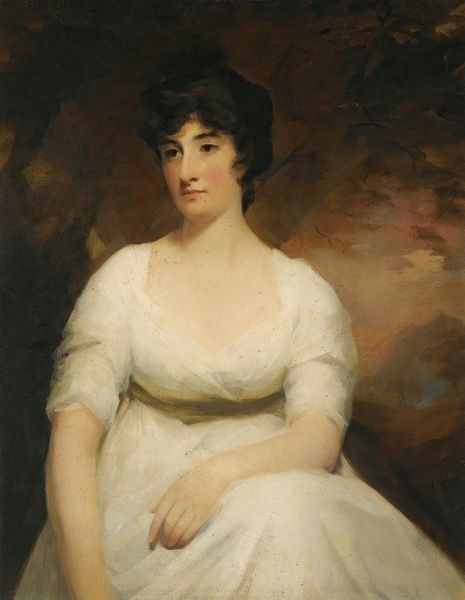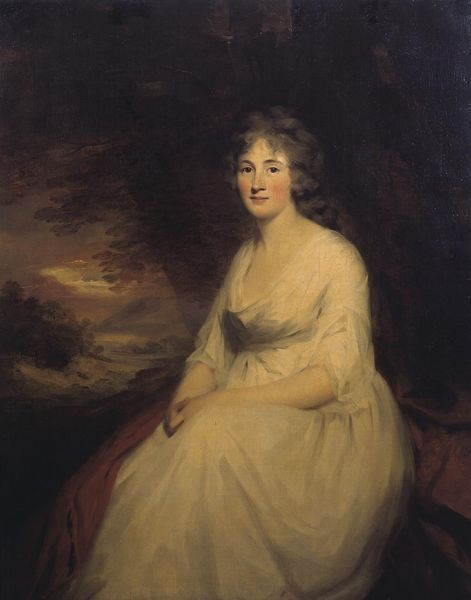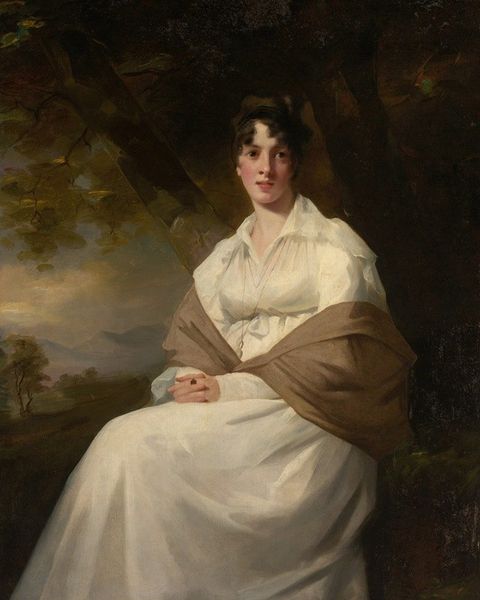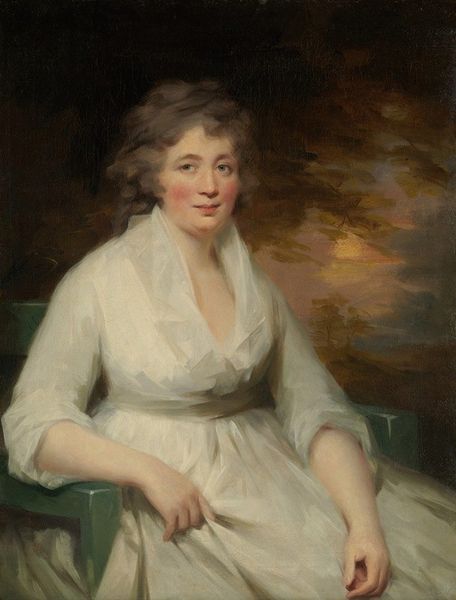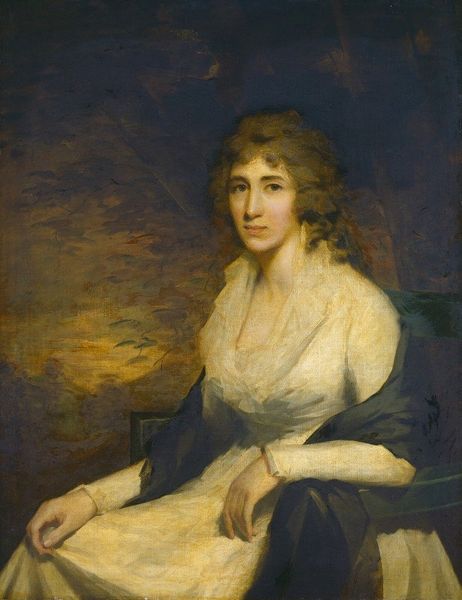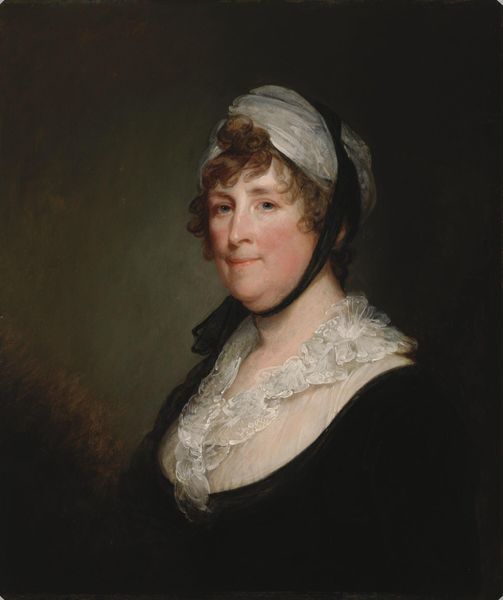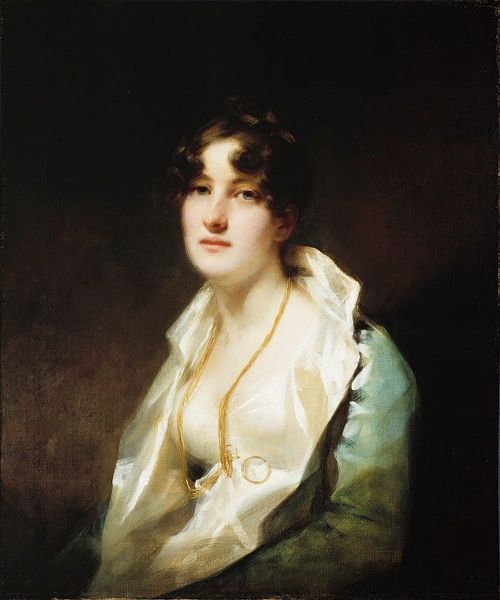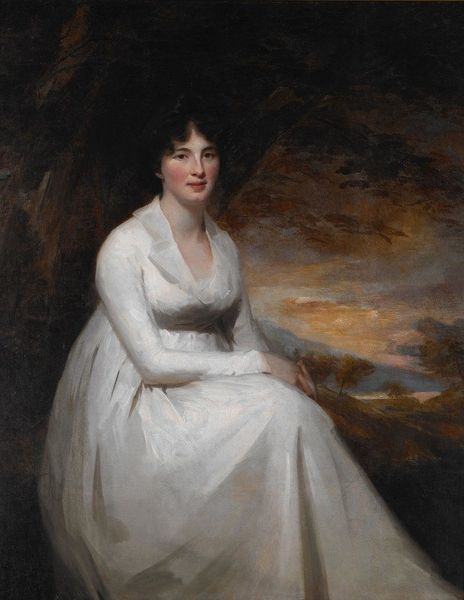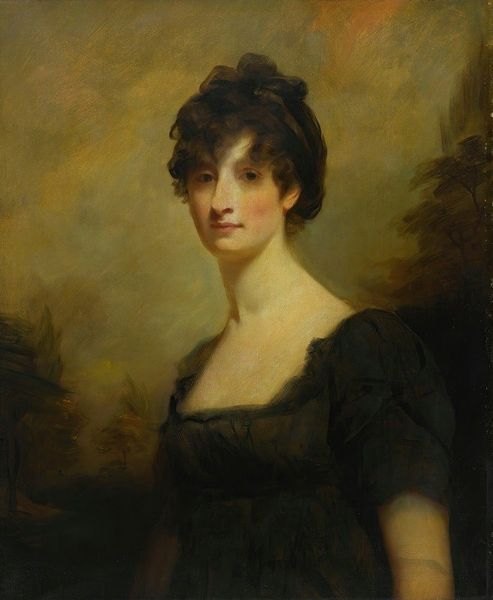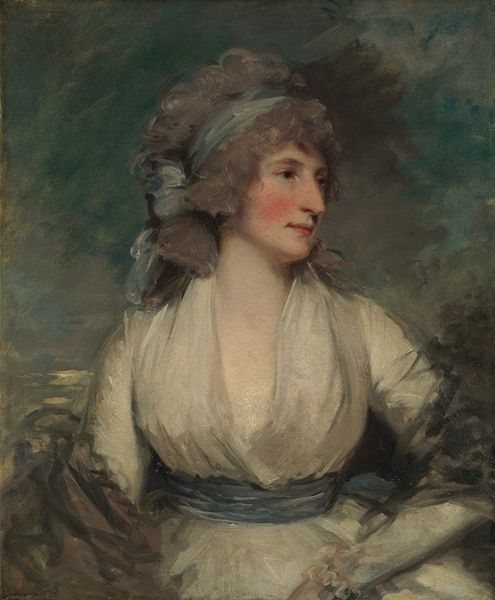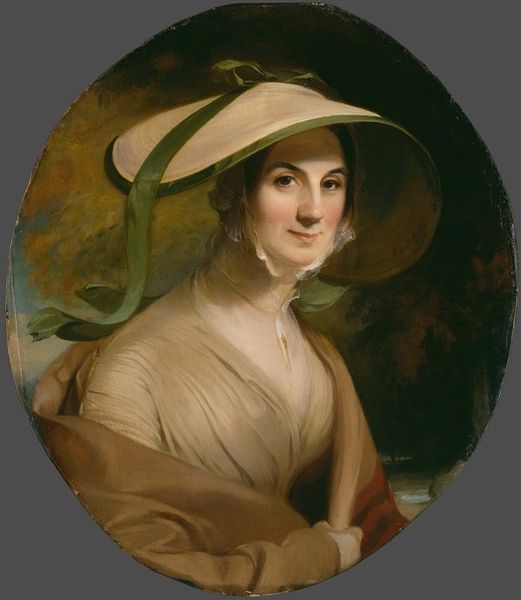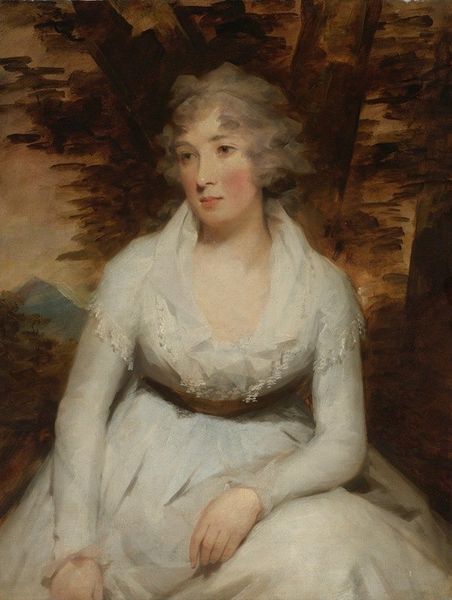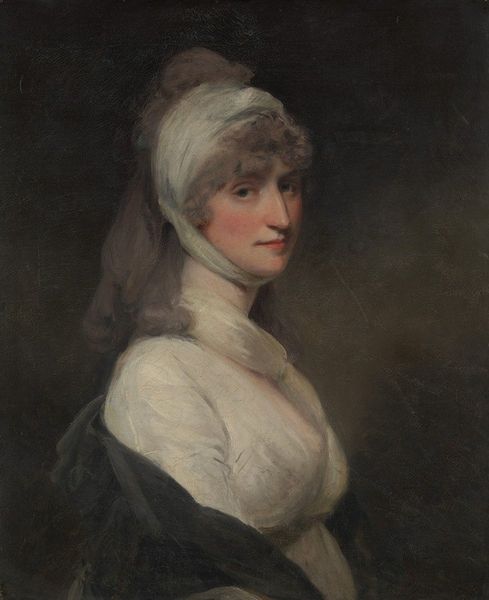
painting, oil-paint
#
portrait
#
figurative
#
portrait
#
painting
#
oil-paint
#
figuration
#
romanticism
Copyright: Public Domain: Artvee
Editor: This is Henry Raeburn's "Lady Anne Torphichen," painted around 1795-1800, in oil paint. There’s something both intimate and formal about her pose. What can you tell me about the making of this work and what it suggests? Curator: From a materialist perspective, Raeburn's technique is fascinating. The brushstrokes seem efficient, almost industrial, hinting at the growing professionalization of art production at the time. He's using his materials - oil paint, canvas - in a manner that showcases both skill and a clear understanding of the market for portraiture. Look at the lace—it's rendered economically, yet conveys luxury. What do you make of that? Editor: It feels like a trade-off. Capturing wealth through suggestion rather than painstaking detail. It makes me think of the economics behind art: materials, time, and the client's resources, influencing the artwork. Curator: Exactly. Consider also the social context. Who was Lady Anne? How did the burgeoning capitalist society of the late 18th century influence portraiture? Raeburn isn't just depicting a woman; he's crafting a commodity that signifies status. Editor: So it's less about her inner life, and more about the presentation of wealth through artistic labor. Does this potentially challenge the Romantic notion of the artist as a solitary genius, disconnected from the means of production? Curator: Precisely! It pushes us to see art as a product of labor, deeply embedded in its time. Editor: This reframes how I see portraiture. It's less about idealized beauty and more about the material realities of production. Curator: Absolutely, recognizing those forces gives us a far richer understanding. Editor: Thank you! This has certainly provided me with some food for thought!
Comments
No comments
Be the first to comment and join the conversation on the ultimate creative platform.
